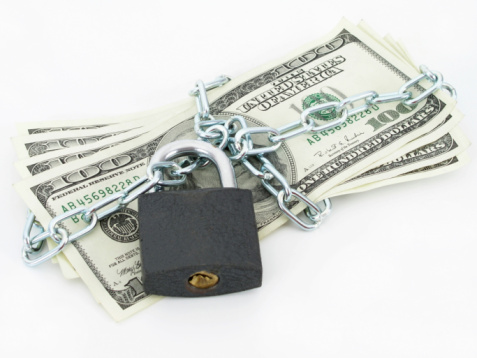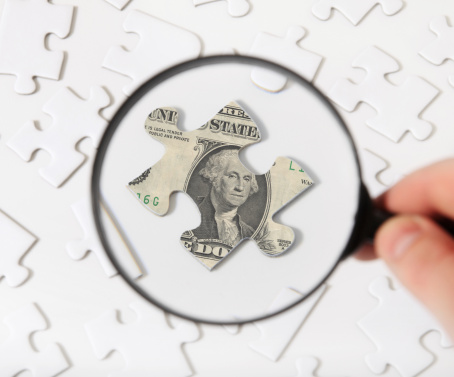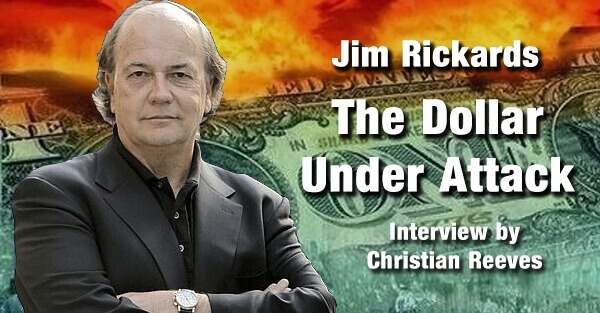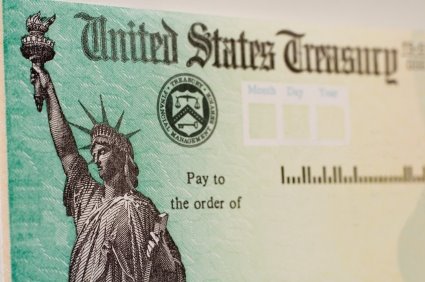The Panama Foundation provides the best asset protection and estate planning available… hands down, no questions asked. Here’s why the Panama Foundation is the ticket for those wanting to move assets out of the United States and eliminate the U.S. estate tax.
First, let me take a moment to summarize the Panama Foundation as an asset protection tool. The Foundation, as defined in the Panama law in 1995, and as updated and improved over the years, is now a separate and distinct entity from its owners. As a result, the Panama Foundation is now recognized, not only by Panama, but by the United States and other countries as one of the most efficient tools out there.
For example, the Panama Foundation is one of the very few foreign structures approved in the Cayman Islands, and is a recommended vehicle for holding investments there. The very conservative country of Cayman (regardless of what you see in the movies, Cayman is extremely conservative) has approved the Panama Foundation to open accounts in its banks and funds without any extra due diligence required. Try to open an account under a Belize corporation and you will be shown the door or told to form a local company.
* Being recognized around the world gives you better access to foreign banks, currencies and investments. It also means you can move quickly out of Panama if sued there.
I also note that the Panama Foundation does not require members or shareholders. All that is needed is the Founder (settlor), the Foundation council, and a beneficiary. You may act as both the Founder and the beneficiary, and may appoint any three people or any one company as the counsel. It is usually this counsel that manages the assets should you become unable or unwilling to do so (such as if you are in litigation or your assets are otherwise under attack).
This is the basic structure. I usually recommend that larger Panama Foundations 1) don’t list the settlor as the beneficiary and 2) appoint an asset manager as the protector or foundation counsel. While it is not required, if the primary purpose of the Foundation is asset protection, taking these steps early can save you in the long urn. Of course, you can add the protector or investment manager later if an attack on your assets is not imminent.
Benefits of a Panama Foundation
There are many benefits of a Panama Foundation for asset protection and I will take many of them in turn here. The first is that the Foundation won’t be taxed in Panama… and no local accounting or audit will be required. I never recommend a jurisdiction for asset protection that requires audited financials, the filing of tax forms, or any other compliance. For example, Hong Kong has a number of these rules so I avoid that jurisdiction.
*So long as the income is from outside of Panama, it will be tax free. Of course, if you open a business (such as a bar) in Panama, you will pay Panama tax on the profits.
Next, the Panama Foundation is a hybrid entity in between a trust and a corporation. Therefore, it may act as an offshore trust, but it is far more cost effective to form and operate than many international trust arrangements.
For example, the Panama Foundation is about 1/3 the cost of a Cook Island Trust and you need not pay for a Protector or asset manager unless you elect to have one. Most trusts require one of these two persons and charge a few percentage points on the assets of the trust (assets under management) to provide them. I’ve seen a CI trust that cost $6,000+ to maintain per year move to Panama and cut these costs down to about $950.
Of course, if you desire advanced fund management services, they are available to you in Panama, Cayman Islands, or elsewhere. All of the major financial service providers are in Panama and we can make introductions to banks and brokerages at all account sizes.
Next, the Panama Foundation is a separate entity and, as such, may enter in to contracts and agreements on behalf of its Founder (you) and as the manager of its underlying assets. The ability to contract and operate as a company separate and distinct from its owner, is why we call the Panama Foundation a hybrid structure. While a trust is one with its settlor, a Panama Foundation is a legal entity like a corporation or LLC (which is why I refer to it as a company).
The only limitation is that a Panama Foundation may not own an active business. If you want to hold a business in a Panama structure, your Foundation may incorporate a Panama corporation, but may not own the business directly.
I note that real estate is usually not an active business… unless you own many units or buy land, divide it, and sell parcels. Your Panama Foundation may own a rental, or you may decide to purchase the condo in a corporation for maximum local asset protection… if something happens to the condo, liability in Panama won’t reach the assets of the Foundation.
A Panama Foundation may be established for the benefit of any third party, or the Founder/settlor may be the beneficiary. As stated above, I don’t recommend the Founder be the beneficiary, but it is possible. You may also list anyone or any company as the beneficiary. If you want to leave your estate to the Red Cross, no problem.
*Beneficiaries may be any person or company. They are not public information.
In fact, your estate plan may be as simple or complex as you like. You might decide to work with the U.S. gift tax exclusion, or the Foreign Earned Income Exclusion for a business in Panama, create a charitable remainder structure, a generation skipping Foundation, or any variation thereof.
The bottom line is that you may control the disposition of assets by lodging a simple or complex list of instructions with the Foundation council. This “letter of wishes” will tell the banks, brokerages, and property managers what to do with your assets upon your passing and may be changed or updated as often as you like… usually at no cost.
Also, the Panama Foundation requires no annual meeting or formalities. With a U.S. structure, if you fail to keep up appearances, creditors may pierce the corporate veil and get to your assets. In Panama, no such laws apply and your assets are secure. As stated above, no audit, accounting, or tax filing will be required.
Structure of the Panama Foundation
A Panama Foundation may use any name available. You’re not required to use your last name, as is the custom with a trust. Though, you do need to include the name “Foundation” in the name. So, The Reeves Private Interest Foundation, Reeves Foundation, or Great Panama Foundation would all be acceptable names.
A Panama Foundation must have a local address and local agent for service of process. Just as when you form an out of state company or LLC, you need to have a local representative to receive legal correspondence. We provide this for you at no cost.
The Founder of a Panama Foundation may be any person or entity (a foreign or domestic corporation, trust, LLC, etc.). In fact, it can be your U.S. retirement account.
* We are currently working on a U.S. compliant IRA Panama Foundation structure, to be released in the next few months.
The most common uses of a Panama Foundation are:
– To hold shares, patents, collect royalties, manage trademarks and other passive activities;
– Offshore asset protection for those who want to diversify out of the U.S.;
– Offshore estate planning for those with more than $5 million in assets (assuming the estate tax amount doesn’t go down, as it has in decades past… then, anyone at risk of qualifying for the U.S. estate tax);
– Investment management and private asset management by firms or outside of the United States, especially where the provider is unwilling to do business with a U.S. person directly.
Panama Foundation Council
As I’ve said, your Panama Foundation may be as simple (cost effective) or complex as necessary. One of the reasons for this flexibility is the Foundation Council, which is unique to Panama. It is this council that allows you to maximize asset protection and, should you come under duress, allows you to separate yourself from the structure and the assets.
* You may manage the Panama Foundation directly until or unless you have an issue (come under attack by a creditor).
You may elect to retain a professional trust company or lawyer to act as your trustee/protector. This person would be appointed by your foundation council and act at your direction.
We provide your foundation council at no additional charge. You may then add an investment manager or lawyer as you see fit. Alternatively, you can manage your Panama Foundation and then seek additional council if you come under duress or litigation becomes likely.
Your Panama Foundation Council may consist of three or more persons or one legal entity (a corporation or LLC). These people or company may be from any country… they need not be Panamanians. Though, I would not use U.S. persons or a U.S. company, as this would eliminate the asset protection benefits of the Panama Foundation. U.S. persons would be subject to the control of or whims of a U.S. court.
So, if you want to create an advanced structure, we can provide a Panama attorney, or an offshore LLC to act as the Foundation Council… maybe a limited liability company from Belize, for example, so as to maximize privacy.
Taxation of a Panama Foundation
As I said above, foreign source and passive income are not taxable to a Panama Foundation owned by a U.S. person. So long as the foundation is not operating a business in Panama, you will pay no local tax.
Of course, if you do operate a business, or sell local real estate, you will pay tax to Panama. The Foundation does not affect local transactions.
If you are living in the United States you (the Founder) are the beneficial owner of those assets for U.S. tax purposes. In other words, the Founder is the owner of the assets which are held by the Foundation and any income generated there from will be taxable in the U.S.
As you know, the U.S. taxes its citizens on their world wide income. The fact that you are using a Panama Foundation for asset protection purposes does not change the tax rule. The U.S. will want its cut of passive income so long as you hold a blue passport and its share of business income so long as you are living in the U.S.
There are a number of tax planning options with a Panama Foundation that are outside of the scope of this article. For example, you might hold an active business in a Panama corporation owned by the Foundation, qualify for the Foreign Earned Income Exclusion, and draw a salary from that corporation of up to $99,200 each (husband and wife) free of U.S. income tax. Then, you may retain earnings over this amount and defer U.S. tax for as long as you like.
You might also decide to create sub-Foundations and transfer portions of the assets in your primary Panama Foundation to your heirs over time using the gift tax exclusions. This may reduce your U.S. tax and have other estate planning benefits.
You may decide to purchase precious metal or physical gold within your Panama Foundation. This can be done in Panama by leasing a local vault and we can introduce you to reputable sources for bouillon if you like.
Finally, you might invest in an offshore life insurance policy through your Panama Foundation. These investments usually of $2 million or more and assuming they are U.S. compliant, may allow you to avoid U.S. tax on passive income and then obtain a step-up in basis upon transfer to the beneficiaries of the Panama Foundation.
For more information on offshore life insurance, the Foreign Earned Income Exclusion, or how to acquire gold in a Panama Foundation, please see my various articles. These are complex topics and I have just touched on them here.
If you would like to form a Panama Foundation, please give us a call or send an email to info@premieroffshore.com. We will be happy to work with you to structure your affairs in a tax efficient and compliant manner.




















